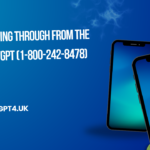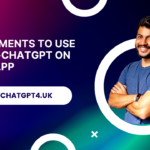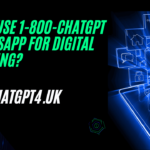Chatbots in Education. As technology continues to advance, the world of education has been transformed in ways that were once unimaginable. One such advancement that is gaining traction is the use of chatbots in education. Chatbots are computer programs designed to simulate conversation with human users, using natural language processing (NLP) algorithms to understand and respond to user queries.
The use of chatbots in education has numerous advantages. They can provide instant support to students, engage them in interactive learning, and deliver personalized learning experiences. In this article, we will explore the various benefits of chatbots in education, as well as the challenges and limitations of using them.
Benefits of Chatbots in Education
Personalized Learning Experiences
One of the primary benefits of chatbots in education is the ability to deliver personalized learning experiences. Chatbots can be programmed to adapt to each student’s learning style, pace, and preferences.
This ensures that students receive individualized attention and support, which is essential for effective learning. By tailoring the content and delivery to the student’s needs, chatbots can help learners achieve their learning goals more effectively.
Instant Support
Another advantage of chatbots is their ability to provide instant support to students. Chatbots can answer questions, provide feedback, and offer guidance on specific topics or assignments.
This is especially useful in situations where students need immediate assistance, such as when they are working on a project or studying for an exam. Chatbots can provide 24/7 support, making learning more accessible and convenient.
Interactive Learning
Chatbots can also engage students in interactive learning experiences. They can be programmed to simulate real-life scenarios and provide students with opportunities to apply their knowledge and skills. This approach to learning is more engaging and can help students retain information better than traditional lecture-style instruction.
Cost-Effective
Chatbots are also a cost-effective solution for education. Compared to traditional teaching methods, chatbots require fewer resources and can be scaled to accommodate large numbers of students. They can also reduce the workload of teachers, allowing them to focus on more complex tasks, such as providing feedback and assessing student performance.
Applications of Chatbots in Education
Student Support
Chatbots can be used to provide support to students in various ways, such as answering questions, providing feedback, and offering guidance on specific topics or assignments. They can also be used to monitor student progress and provide personalized recommendations for improvement.
Virtual Tutoring
Chatbots can serve as virtual tutors, providing one-on-one instruction to students. They can be programmed to adapt to each student’s learning style, pace, and preferences, providing personalized instruction that meets the needs of each individual learner.
Language Learning
Chatbots can be used to support language learning by providing conversational practice and feedback. They can simulate real-life conversations, providing students with opportunities to practice their language skills in a safe and supportive environment.
Assessment and Feedback
Chatbots can also be used to assess student performance and provide feedback. They can grade assignments, provide feedback on written work, and assess student understanding through quizzes and assessments. This can help teachers save time and provide more accurate and timely feedback to students.
Challenges and Limitations of Chatbots in Education
While chatbots have numerous benefits for education, there are also some challenges and limitations that need to be addressed.
Lack of Human Interaction
One of the primary limitations of chatbots is the lack of human interaction. While chatbots can provide personalized support and feedback, they cannot replace the value of human interaction in education. Human interaction is essential for building relationships, fostering collaboration, and developing social and emotional skills.
Limited Contextual Understanding
Another challenge of chatbots is their limited contextual understanding. Chat bots rely on algorithms and pre-programmed responses to understand and respond to user queries. This means that they may struggle to understand complex or nuanced queries or provide responses that take into account the broader context of the conversation.
Technical Issues
Chatbots are also prone to technical issues that can impact their reliability and effectiveness. They may experience downtime, require maintenance and updates, or encounter technical glitches that can disrupt the learning experience. Additionally, chatbots may not be accessible to students who do not have access to reliable internet connections or devices.
Ethics and Privacy Concerns
There are also ethical and privacy concerns associated with the use of chatbots in education. Chatbots may collect sensitive information about students, such as their learning preferences and performance data, which raises questions about data privacy and security. Additionally, there may be concerns about the ethical implications of using chatbots to replace human teachers or support staff.
Best Practices for Using Chatbots in Education
To maximize the benefits of chatbots in education and address the challenges and limitations, there are some best practices that educators should follow:
Supplement, Not Replace, Human Interaction
It’s important to remember that chatbots should supplement, not replace, human interaction in education. Chatbots can provide personalized support and feedback, but they cannot replace the value of human interaction in building relationships, fostering collaboration, and developing social and emotional skills.
Use in Conjunction with Other Technologies
Chatbots should be used in conjunction with other technologies to create a comprehensive learning experience. For example, chatbots can be used in combination with virtual reality, augmented reality, or gamification to create interactive and engaging learning experiences.
Ensure Accessibility and Inclusivity
It’s essential to ensure that chatbots are accessible and inclusive for all students, regardless of their backgrounds or abilities. This means designing chatbots with accessibility features, such as text-to-speech and captioning, and ensuring that they are compatible with a variety of devices and internet connections.
Address Privacy and Security Concerns
Educators must address privacy and security concerns associated with chatbots. This includes ensuring that chatbots comply with data privacy regulations and implementing measures to secure sensitive data collected by chatbots.
Conclusion
In conclusion, chatbots have the potential to revolutionize education by providing personalized support and feedback, engaging students in interactive learning experiences, and delivering cost-effective solutions. However, there are also challenges and limitations that need to be addressed, such as the lack of human interaction, limited contextual understanding, technical issues, and ethical and privacy concerns.
By following best practices and using chatbots in conjunction with other technologies, educators can create a comprehensive and inclusive learning experience that maximizes the benefits of chatbots while addressing the challenges and limitations.
FAQs
What is a chatbot in education?
A chatbot in education is an artificial intelligence tool designed to assist students with learning tasks and answer their questions. Chatbots use natural language processing to understand students’ queries and provide relevant responses.
What are the benefits of using chatbots in education?
The benefits of using chatbots in education include providing personalized support and feedback to students, creating interactive and engaging learning experiences, and delivering cost-effective solutions.
Can chatbots replace human teachers?
No, chatbots cannot replace human teachers. While chatbots can provide personalized support and feedback to students, they lack the human touch necessary for building relationships, fostering collaboration, and developing social and emotional skills.
Are chatbots accessible to all students?
Chatbots can be designed to be accessible to all students by incorporating accessibility features such as text-to-speech and captioning. It’s important for educators to ensure that chatbots are compatible with a variety of devices and internet connections to ensure accessibility.
What are the limitations of chatbots in education?
The limitations of chatbots in education include their limited contextual understanding, technical issues such as downtime and glitches, and ethical and privacy concerns surrounding the collection of sensitive student data.
How can educators use chatbots effectively?
Educators can use chatbots effectively by supplementing human interaction, using chatbots in conjunction with other technologies, ensuring accessibility and inclusivity, and addressing privacy and security concerns. By following best practices, educators can create a comprehensive and inclusive learning experience that maximizes the benefits of chatbots while addressing the challenges and limitations.







